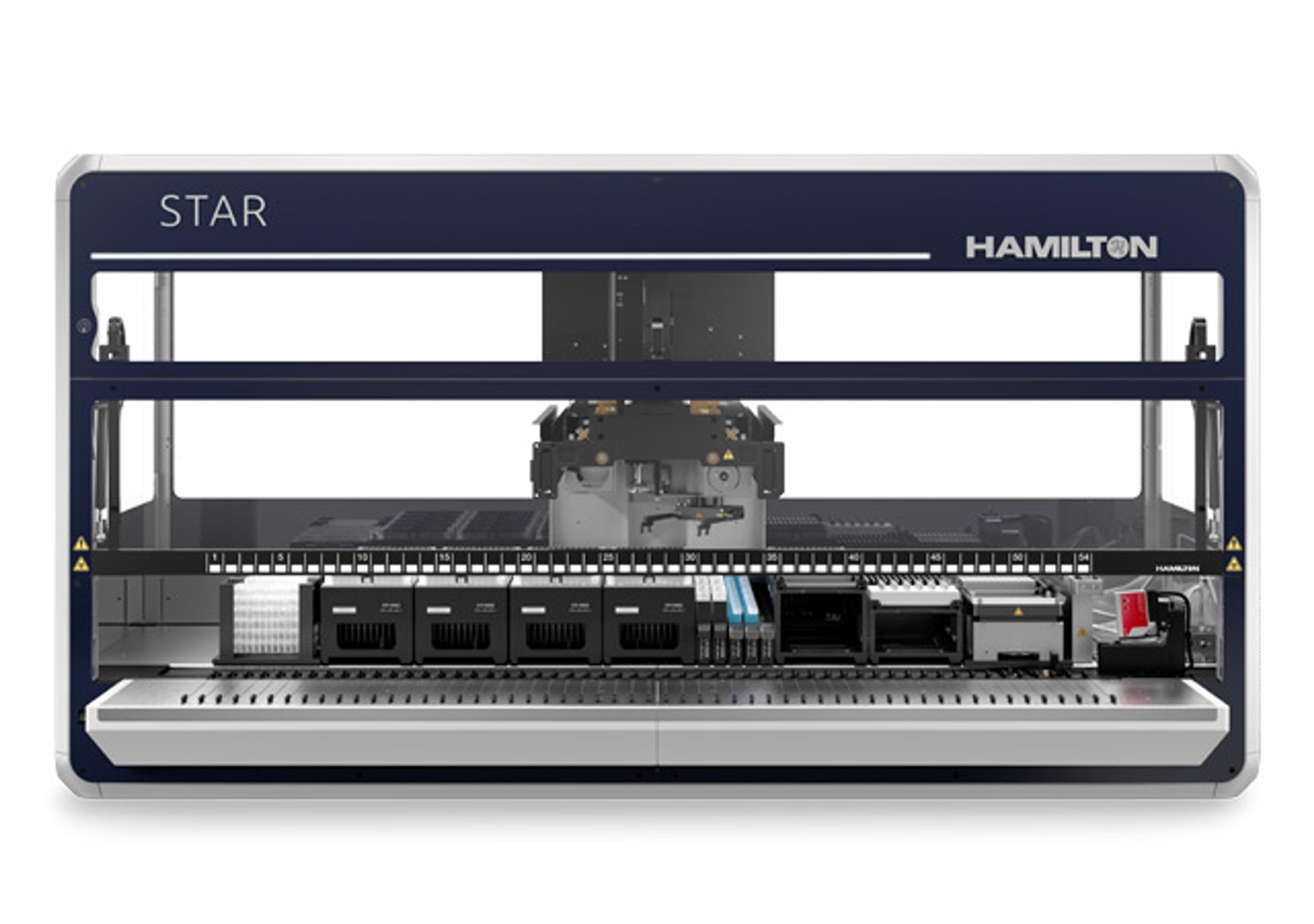Recovery of Serum Directly from Serum Separator Tubes (SST) for Viral Testing and Archiving
13 Nov 2013
Hamilton have developed a protocol to recover gel free serum directly from serum separator tubes for testing or archiving that uses the Monitored Air Displacement (MAD) feature of the STAR to detect the presence of the gel or blood/buffy coat layer that separates the serum from the red blood cells. This is required for archiving of plasma from tubes with variable volumes of plasma and is often a huge workflow bottleneck in clinical diagnostic laboratories.
The system takes multiple aliquots from the source tube until the gel plug is detected. When the gel plug is detected during the aspiration of an aliquot, the sample is put back into the tube and the sample not used again. The "purity" of the plasma sample and maximum amount retrieved is defined by the size of the aliquot taken on each aspirate step and is user definable. There is balance between size and number of aliquots transferred for each sample and time for the overall process. The system has been used with 300ul tips and 1000ul tips depending on customer requirements. This has been a key implementation in several clinical diagnostic laboratories where this manual step was laborious and prone to human error. This is achieved with full sample bar code traceability.
STARLine configurations can vary from 4 channel STARLet to multi channel (8+) STAR/STARPlus systems. This protocol is performed on a standard Hamilton STARLine instrument without special hardware of software modifications and the front end GUI can be tailored to specific user environments / requirements.
Testing in customer labs has revealed that the same principals could be applied to the aliquoting of EDTA plasma samples where the white blood cell layer that separated the plasma from the red blood cells would start to block the tip and trigger the pressure sensor which would result in the sample being put back into the source tube. The ability to aliquot EDTA samples has also been built into the protocol. You can download the application note here, and click on the ‘request information’ tab below for more details.

